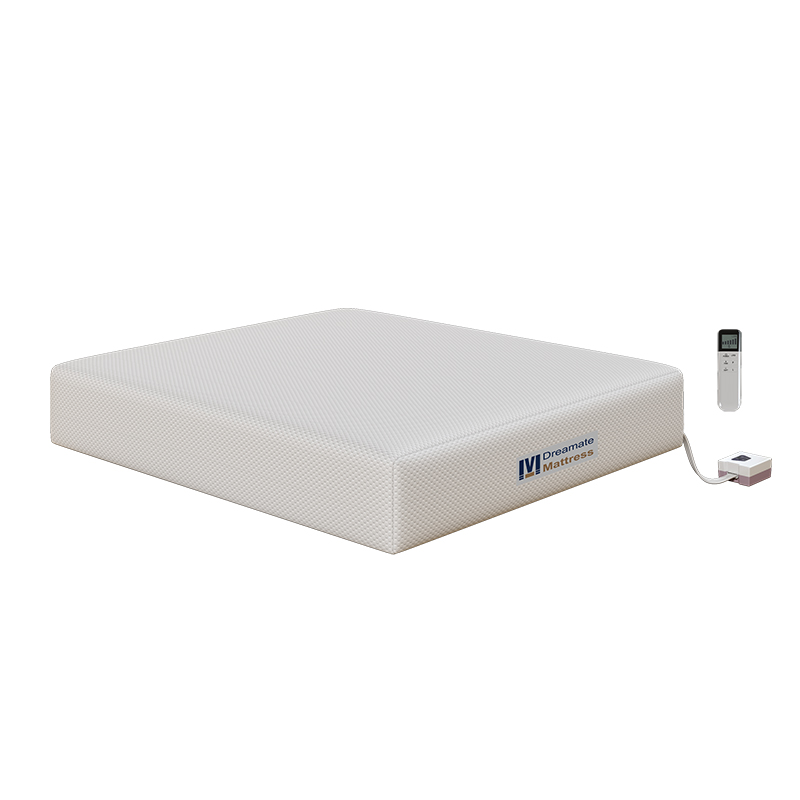The global mattress industry is undergoing a significant transformation, moving beyond traditional springs and foam to become a hub of innovation focused on health, technology, and sustainability. Driven by a more discerning consumer base, manufacturers are rapidly adapting. Here are the five key trends defining the market's latest developments:
The smart bed segment is experiencing explosive growth, shifting from a niche product to a mainstream contender. The latest generation of smart mattresses goes far beyond adjustable firmness.
What's New: Advanced models now feature embedded sensors that track a wide array of biometric data, including sleep stages, heart rate, and breathing patterns. Using artificial intelligence (AI), these mattresses analyze this data to provide personalized sleep coaching and insights directly to a user's smartphone. A major focus is on automatic climate control, with systems that actively cool or heat each side of the bed throughout the night to maintain an optimal sleeping temperature.
Industry Impact: This trend is creating a new revenue stream through subscription-based wellness platforms and is positioning the mattress as a central piece of the connected health ecosystem within the smart home.
Environmental consciousness is now a critical factor in purchasing decisions, pushing manufacturers to radically rethink their materials and processes.
What's New: The use of certified organic and natural materials—such as organic cotton, wool, and latex—is becoming standard practice. There is also a significant push towards developing plant-based and bio-based foams to replace traditional petroleum-based alternatives. Furthermore, the industry is seeing a rise in transparent supply chains and end-of-life recycling programs designed to tackle the problem of mattress waste and promote a circular economy.
Industry Impact: Sustainability is no longer just a marketing claim but a fundamental aspect of product development, influencing everything from material sourcing to packaging and logistics.
Mattresses are increasingly being marketed and designed as therapeutic devices, leading to strategic collaborations with health experts.
What's New: Leading manufacturers are partnering with chiropractors, orthopedic specialists, and sleep researchers to co-develop products. This has resulted in features like medically-endorsed zoned support systems for unparalleled spinal alignment and pressure-relief technologies aimed at improving circulation and preventing pain. The language of marketing has shifted from "comfort" to "health outcomes."
Industry Impact: These collaborations provide scientific credibility and allow companies to target consumers who view sleep as an essential component of their overall health and wellness routine.
The DTC channel, which revolutionized mattress shopping, is maturing and adapting to new market realities.
What's New: In response to online saturation, purely digital-native players are increasingly establishing a physical omnichannel presence through showrooms and pop-up stores. This allows customers to experience the product firsthand before purchasing. Simultaneously, there is a move towards strategic wholesale partnerships with large retail chains, blending online convenience with offline trust.
Industry Impact: The distinction between DTC and traditional retail is blurring. Success now depends on a seamless customer journey that integrates online research, in-person testing, and flexible delivery options.
Material science is advancing rapidly to address classic consumer pain points like heat retention and durability.
What's New: While memory foam remains popular, new innovations are gaining ground. Gel-infusions, graphite embeddings, and phase-change materials are now commonplace to enhance breathability. Natural latex is prized for its cooling and responsive properties. This has solidified the hybrid mattress—which combines the support of innersprings with the comfort of foam or latex—as the dominant and fastest-growing product category, offering a balanced "best of both worlds" feel.
Industry Impact: Continuous innovation in materials is a key competitive differentiator, allowing companies to offer improved performance and meet specific consumer demands for cooler, more responsive sleep surfaces.
Conclusion: The mattress industry is more dynamic than ever. Success is now contingent on a manufacturer's ability to seamlessly blend cutting-edge technology, genuine sustainable practices, and a science-backed approach to health and wellness. The bed of the future is not just for sleeping; it's an intelligent, health-focused platform designed to optimize our well-being.

leave a message
Scan to wechat :

Scan to Whatsapp :
